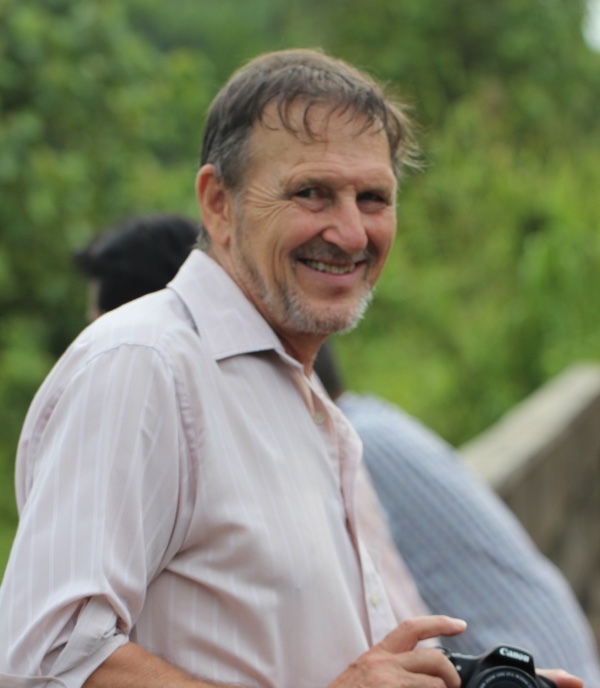Alumnus proposes environmental strategies for vector-borne diseases
Story text Heading link

The World Health Organization (WHO) estimates 241 million people contracted malaria in 2020; more than 600,000 died. SPH alumnus Ron Markwardt, PhD in Community Health Sciences ’92, is advancing a novel ecological method to address vector-borne diseases in a new book he has co-edited titled “Innovations in the Entomological Surveillance of Vector-Borne Diseases.”
“There’s no getting rid of mosquitos, but preventing contact with humans is doable,” Markwardt said. “Identifying environmental niches where outbreaks are most likely to occur makes proactive intervention possible.”
Markwardt has worked in Thailand for the last 16 years, focused on both community mental health and investigating the spread of vector-borne diseases like malaria, dengue, chikungunya virus and filariasis. With colleagues, he has coined the term “ecotopic entomologic surveillance.” Ecotopes are the smallest ecological units needed to sustain life, and Markwardt’s research has focused on pinpointing ecotopes where people may be at high risk for contracting malaria by capturing mosquitos and identifying the parasites or viruses they carry before they bite humans.
“Normally you find a person who is sick, and other than treating the ill, vector control offices will spray for mosquitos, but that is always after people have been affected,” Markwardt said. “In these rural areas [in Thailand], that’s not very effective. The only sure way to eliminate infection is to prevent exposure.”
Markwardt says this ecotopic approach is critical because of the varied ways that humans interact with their environment. For example, bed nets are often proscribed as a tool to prevent mosquito bites at night. In Thailand, agricultural workers who harvest latex sap from rubber trees work at night, often in shirt sleeves, shorts and flip flops. By understanding ecotopes and how humans interact with the environment, public health practitioners can build carefully tailored preventive education on use of proper clothing and repellents.
Markwardt cautions that identifying exposure and susceptibility can be highly complicated. For example, while Thailand’s medical system follows UN and WHO guidelines toward elimination of diseases like tuberculosis and malaria, neighboring Myanmar provides preventive doses of medicine to provide its citizens with an acquired immunity rather than seeking to control the spread of viruses and parasites. When Myanmar citizens or animals cross the border into Thailand, they may unwittingly pass along diseases to Thai citizens with no immunity.
Nations in southeast Asia also often have freely available and affordable medicines, but unfortunately not all are legitimate. People who don’t want to wait at a hospital for an appointment and diagnosis may self-medicate, and medications taken for malaria may not be consumed in sufficient doses, or even be counterfeit concoctions.
Nevertheless, Markwardt says his research on ecotopic approaches highlights a key epidemiologic method beyond testing and responding post infection to these diseases.
“If there’s anything I’ve learned, it’s to promote One Health,” Markwardt said. “A healthy environment means healthy people.”